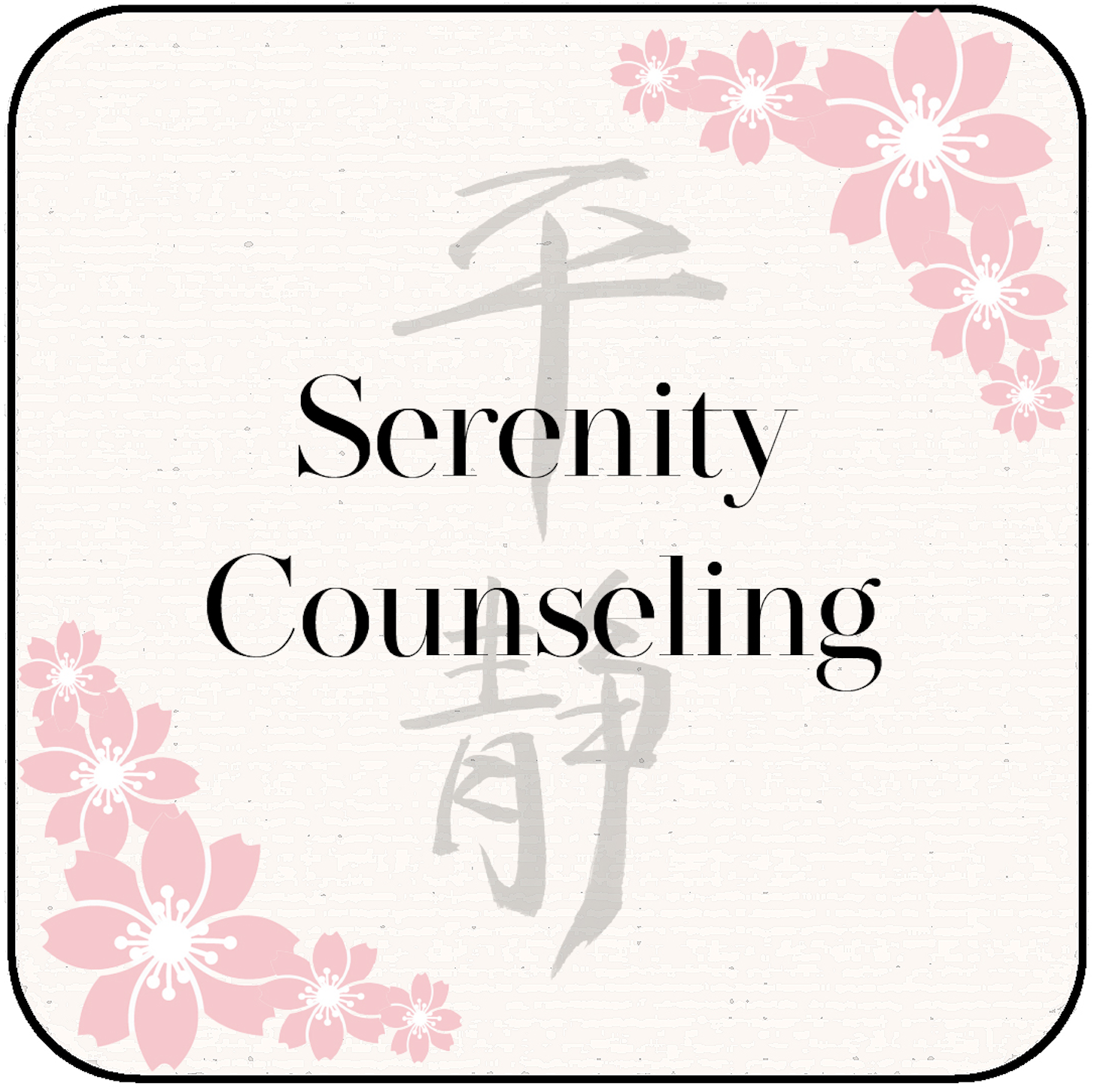
Have you ever felt your heart racing and a sense of overwhelming dread creeping up on you? You’re not alone; these could be signs of an anxiety attack, a common mental health concern affecting millions.
This article uncovers the reality of anxiety attacks, equipping you with knowledge to recognize symptoms and strategies for management. Keep reading—you’ll discover ways to regain control and calmness.
Understanding Anxiety

Understanding anxiety is akin to delving into the intricacies of human emotion – it’s a complex, multifaceted experience that affects us all in varied ways. It’s not just the occasional worry or nervousness; it’s when these feelings intensify and persist, potentially escalating into an anxiety disorder that can profoundly impact our daily lives.
What is anxiety?
Anxiety is a feeling of worry, nervousness, or fear about what might happen. It’s normal to feel anxious from time to time, like before a big test or when facing problems at work. But for some people, anxiety can be much more than just temporary worry.
It can be strong and constant, making everyday things hard to do.
People with anxiety often have physical symptoms too. They might breathe faster, feel sick in the stomach, get dizzy, or have headaches even if there’s no clear reason for them to feel this way.
These are signs that the body is getting ready for something stressful even if there isn’t anything actually threatening around.
Now imagine these feelings happening almost all the time – that’s what having an anxiety disorder can be like. Let’s discuss different types of anxiety disorders next.
Types of anxiety disorders
Anxiety disorders are different types of mental health conditions. Each one can make you feel scared and worried more than usual.
- Generalized anxiety disorder (GAD): This is when someone worries too much about everyday things, even if there’s no real reason to worry about them. People with GAD feel anxious almost all the time, which can be very tiring.
- Panic Attacks and Panic Disorder: Panic attacks hit you fast and hard with fear and physical signs like a racing heart or trouble breathing. People with panic disorder get these feelings out of nowhere, often worrying about when the next attack might happen.
- Obsessive-compulsive disorder (OCD): OCD makes people have thoughts they don’t want or do the same things over and over again. Someone might wash their hands many times because they’re scared of germs, or check locks a lot to make sure everything is safe.
- Social Anxiety Disorder: This is a strong fear of being judged by others in social situations. If you have this, you might feel really nervous about talking to people, meeting new friends, or speaking in front of groups.
- Post-traumatic Stress Disorder (PTSD): PTSD can happen after someone has been through a scary event like war or an accident. They might have nightmares, flashbacks, or could feel sad and alone for a long time.
- Phobias: A phobia is an extreme fear of something that probably won’t harm you. For example, you might be very afraid of spiders or flying in airplanes even though they are usually safe.
- Separation Anxiety Disorder: Mostly seen in kids and teens, this disorder involves intense worry when away from home or parents. Kids may not want to go to school or sleep alone because they fear something bad will happen to their loved ones while they’re apart.
What is an Anxiety Attack?

An anxiety attack is a sudden surge of overwhelming fear and discomfort, accompanied by physical and mental symptoms that can disrupt one’s daily life – think heart racing, shortness of breath, or an uncontrollable sense of doom.
Recognizing these episodes as more than just extreme worry is the first step toward reclaiming calm in the storm of anxieties.
Symptoms of anxiety attacks
Feeling worried or nervous is normal, but anxiety attacks are different. They can be scary and happen suddenly, making your body react in strong ways.
- Your heart starts to pound or beat very fast. This can feel like it’s thumping against your chest wall.
- Breathing gets quicker and shallower. You might feel like you can’t catch your breath.
- Sweating more than usual, even if you’re not hot or exercising.
- Feeling dizzy or lightheaded, as if you might pass out.
- Chest pain that makes you wonder if you’re having a heart attack.
- Nausea or stomach trouble, which can mean feeling sick to your stomach or needing to go to the bathroom right away.
- Shaking limbs or trembling fingers; it’s like your body is on high alert.
- A sense of restlessness, as though you need to move but don’t know where to go.
- A feeling of terror that may seem out-of-the-blue; it’s much stronger than just being stressed out.
How to recognize an anxiety attack
Knowing the symptoms of anxiety attacks is one step, but recognizing when you or someone else is having one is key. Here’s how to tell if an attack is happening:
- Look for rapid breathing or feeling short of breath. This could be a sign that an anxiety attack is starting.
- Pay attention to feelings of restlessness and being unable to sit still.
- Notice if there is sudden dizziness or lightheadedness, which can mean an anxiety attack is occurring.
- Watch out for sweating more than usual without a clear reason like hot weather or exercise.
- Check the heartbeat – a fast or irregular beat might signal an anxiety attack.
- Be aware of feelings of extreme worry or fear that come on quickly and might not match the situation.
- Recognize if someone says they feel like they are losing control or going “crazy” – it’s often part of experiencing an anxiety attack.
- Acknowledge physical signs too, such as nausea, headaches, and diarrhea; these are common during anxiety attacks.
Anxiety Attack vs. Panic Attack

Understanding the distinction between an anxiety attack and a panic attack is crucial; though they may share certain features, their onset, duration, and intensity can vary greatly.
The subtleties in symptoms are often misunderstood—knowing these differences not only clarifies what someone might be experiencing but also guides them towards the appropriate response and treatment.
Difference in symptoms
You might feel lightheaded or have a fast heartbeat when you’re having an anxiety attack. Your breath might speed up, and your hands could get all sweaty. Anxiety makes people feel restless, too.
It’s like you’ve got this fear that won’t go away, and sometimes your stomach acts up, causing diarrhea.
Now think about panic attacks; they can hit harder than anxiety attacks. Imagine feeling so scared that it feels like you can’t control anything around you. These really strong feelings of terror happen suddenly with panic attacks.
Unlike the slow build-up of anxiety, a panic attack comes out of nowhere and usually doesn’t last long—just about 10 minutes—but it can feel much worse while it’s happening.
Differences in how they start
Anxiety attacks often creeps up slowly. They might start when you’re feeling worried about something specific like a big test or meeting someone new. This worry can build little by little, turning into an anxiety attack.
On the other hand, panic attacks strike out of nowhere. You could be relaxing on your couch and then—bam—a rush of intense fear hits you hard.
Knowing this difference is key to understanding what’s happening to you. Anxiety might grow from stress over time and have clear reasons behind it. But with panic, there’s no warning and no obvious trigger at first glance—it feels like your body has sounded the alarm for no reason at all.
These sudden moments can really throw you off, making it scary just thinking about when the next one will come along.
Differences in duration
Anxiety attacks and panic attacks also differ in how long they last. Panic attacks are like a sudden storm – intense and scary, but usually over quickly, often within 10 minutes.
They hit their high point fast and then start to fade away.
On the other hand, anxiety attacks are more like a long rain that can go on for hours or even days. They don’t peak all at once; instead, the feeling of worry builds up slowly. You might feel tense for a longer time with an anxiety attack compared to the swift wave of fear in a panic attack.
This means it’s important to have ways to calm down over time if you’re dealing with high anxiety or stress.
Causes of Anxiety Attacks

Stressful life events can trigger anxiety attacks. This might include a big change such as moving, losing a job, or having a baby. Some people have an anxiety attack because of money worries or problems at work.
It’s also common to feel anxious when dealing with health issues or when someone close to you is sick or dies.
Your body can react strongly to fear and stress. The “fight-or-flight” response kicks in. Your heart beats fast, and breathing speeds up. Sometimes things from your past can cause these feelings too, like abuse or trauma as a child.
Even certain habits like not getting enough sleep or drinking too much caffeine can lead to an anxiety attack.
Drugs and alcohol may play a role as well. If you use them often, they could make your feelings of anxiety worse over time. For some people with anxiety disorders like phobic disorder, just thinking about their fear can start an attack.
Next, let’s look into the complications that might arise from frequent anxiety attacks.
Complications of Anxiety Attacks
Anxiety attacks can make life really hard. They might cause trouble with work, school, or relationships because the worry and fear get too big. Sometimes people start to avoid places or things that make them feel anxious.
This can lead to not going out much at all, which is called agoraphobia.
If anxiety attacks happen a lot and are very strong, they can also hurt your body. For example, someone could have an upset stomach often or even have their heart beat too fast. It’s important to take care of anxiety early so it doesn’t cause bigger problems later on.
Types of Anxiety Disorders and Their Symptoms
Anxiety takes many forms, each with its unique set of symptoms that can disrupt daily life. From the pervasive worry of Generalized Anxiety Disorder to the intense episodes characteristic of Panic Disorder, understanding these varied conditions is the first step towards regaining control and finding effective treatment.
Generalized anxiety disorder (GAD)
Generalized anxiety disorder, or GAD, is a mental illness where people feel very worried almost all the time. These worries are not about anything specific and can make life really hard.
Imagine feeling nervous every day but not knowing exactly why. People with GAD might have a tough time sitting still, focusing on tasks, or getting good sleep because of their anxiety.
GAD takes a big toll on how you think and act each day. It’s key to remember that treatments like cognitive-behavioral therapy (CBT) and medicines can help lots of people manage their symptoms better.
Now let’s look at panic attacks and panic disorder to understand more about these intense episodes of fear.
Panic attacks and panic disorder
Panic attacks hit hard and fast. They send waves of fear rushing through your body. You might feel a racing heart, sweat a lot, or have trouble breathing. Sometimes, these attacks can feel like medical emergencies because they’re so intense.
Panic disorder is when you have repeated panic attacks and spend long periods worrying about having another one.
Doctors use the Diagnostic and Statistical Manual of Mental Disorders to diagnose mental health issues, including panic disorder. If you live with this condition, it may seem like fear grabs hold of you without any warning.
Your mind races with thoughts of losing control or even fears that don’t make sense at all—the dread feels just too real. Getting help from healthcare professionals can change things for the better—they understand what’s going on and know how to help you tackle these overwhelming experiences.
Obsessive-compulsive disorder (OCD)
Moving from panic attacks, let’s talk about another type of anxiety disorder: Obsessive-compulsive disorder, or OCD. It’s a condition where people have unwanted thoughts that make them feel driven to do something repetitively.
These repeated actions, called compulsions, can include things like hand washing, checking on things, or cleaning. They’re often done with the hope of preventing obsessive thoughts or making them go away.
People with OCD might understand their obsessions aren’t true; they might try not to think about them or stop the compulsive behaviors. But that causes them much stress and anxiety.
Untreated OCD can affect all parts of life—work time, school activities, and relationships suffer too. Therapy options such as cognitive-behavioral therapy and exposure therapy are helpful for those struggling with OCD.
It’s key for anyone facing overwhelming worries and fears related to OCD to get professional help so they can get back to living their best life without these constant interruptions.
Social anxiety disorder
Social anxiety disorder makes people feel very worried and self-aware in places with others. They might get really nervous about what they will say or do, and fear being judged. This can be so scary that they try to stay away from social spots altogether.
People with this problem often deal with strong feelings of fear when they have to do things like speak in front of a group or meet new people. Their worry about being embarrassed can be so bad that it gets in the way of work, school, or other activities.
They might understand their fear is more than what’s normal, but still find it really hard to control their nerves around others.
Post-traumatic stress disorder (PTSD)
Post-traumatic stress disorder, or PTSD, is a kind of anxiety that happens after someone goes through a really scary event. It’s not just feeling scared; it’s when your mind keeps reliving the bad memories and feelings.
People with PTSD may have nightmares, feel angry for no reason, or get frightened easily. They might stay away from places or people that remind them of what happened.
This can make life really hard. Someone might start feeling down all the time or even use alcohol to try to forget. But there are ways to help ease these tough feelings and thoughts with treatment like talking therapy (psychotherapy) and medicine (like anti-anxiety medications).
Now let’s look at how we can treat anxiety attacks so they don’t take over our lives.
Treatment for Anxiety Attacks
Understanding the right treatment for anxiety attacks is pivotal to managing this often debilitating condition. While medication can be an effective route, psychotherapy, particularly cognitive behavioral therapy (CBT), has shown remarkable success in helping individuals alter their thought patterns and responses to anxiety-provoking situations.
Medication
Doctors can prescribe different kinds of medicines for anxiety attacks. These include antidepressants, anti-anxiety drugs, and beta-blockers. The right choice depends on the person and their type of anxiety disorder.
Medicines help manage symptoms so people can feel better.
Some antidepressants work well to lower worry and fear over time. They must be taken every day, not just when someone feels anxious. It’s important to follow the doctor’s advice about these medicines because they take time to work.
Anti-anxiety medications help quickly but shouldn’t be used for too long because they might become habit-forming.
If a doctor says it’s okay, Cognitive Behavioral Therapy (CBT) along with medication is often very helpful for treating anxiety disorders. This mix helps many people learn how to deal with their fears while also helping calm their minds with medicine.
Psychotherapy
Talking to someone about your worries can make a huge difference. That’s where psychotherapy comes in, especially cognitive behavioral therapy or CBT. It helps you deal with anxiety by changing the way you think and act.
Picture this: You work with a therapist who understands how tough things can get when fear takes hold of your mind. This expert shows you how to face these fears head-on and manage them better.
Medications might help too, but they often work best when combined with talking therapies like CBT. Together, they tackle both the mental and physical sides of anxiety attacks. So while drugs may calm your body down quickly, therapy gives you skills for long-term stress management.
And that means more control over those overwhelming emotions—giving you back the peace of mind you deserve.
Tips for Dealing with Anxiety Attacks
Navigating the tumultuous waters of anxiety attacks can be daunting, but there are practical anchors to steady your ship. From embracing lifestyle modifications to seeking solace in community connections, these strategies offer a lifeline that empowers you to reclaim calm amidst the storm.
Lifestyle changes
Living with anxiety can be tough, but making some changes in your daily life can help you feel better. Simple shifts in your routine and habits can reduce stress and improve how you handle anxious feelings.
- Eat a balanced diet: Include fruits, vegetables, lean proteins, and whole grains to fuel your body and mind.
- Exercise regularly: Physical activity releases chemicals in your brain that lift your mood and can make you feel less anxious.
- Get enough sleep: Aim for 7-9 hours each night to help your body recover and manage stress better.
- Limit caffeine and alcohol: These substances can increase anxiety levels and disrupt sleep.
- Practice relaxation techniques: Try deep breathing exercises or progressive muscle relaxation to calm your mind.
- Set goals: Work towards small achievable goals to build confidence and a sense of accomplishment.
- Be social: Connect with friends or join support groups to share experiences and coping strategies.
- Try new activities: Engage in hobbies that make you happy and distract you from worry-ridden thoughts.
- Manage time effectively: Organize your schedule to reduce the last-minute rush that can cause anxiety.
- Take breaks: Give yourself permission to step away from stressful situations to recharge.
Support and connection with others
Talking to someone about your anxiety can make a big difference. You might feel better just sharing what you’re going through. Joining a support group lets you meet others facing the same struggles.
They understand how hard it can be and can share ways to deal with tough times.
Staying close to friends or family members also helps when you’re feeling anxious. They give comfort and remind you that you’re not alone in this fight. If something bad happened in your life, finding someone to talk it out with is very important for healing.
Remember, reaching out for help shows strength, not weakness.
When to Seek Professional Help
Feeling worried or scared all the time is not normal. It might be time to get help if this worry is too much.
– If stress and fear do not go away, seeing a therapist could be the key to feeling better.
– Everyday tasks feel too hard because of anxiety. This is a sign that it’s important to find someone trained to give support.
– Experiencing symptoms like fast heartbeats, shaking, or having trouble breathing during an anxiety attack can mean you need professional care.
– Having thoughts that scare you about hurting yourself should lead you right away to talk with a mental health expert.
– Notice if your worry makes it tough for you to sleep well, eat right, or enjoy life; these are reasons why talking with a counselor could help.
– Start experiencing physical problems like stomachaches or headaches often—they might be linked to anxiety and professionals can assist in managing them.
– Avoiding friends and activities you used to love could indicate social phobia; therapists have ways to deal with this kind of fear.
– Can’t stop thinking over bad things that happened? This may be rumination which experts in mental health can address effectively.
– Fearful feelings after something really scary happens might suggest PTSD—a condition where specialized therapy can make a big difference.
If any of these troubles sound like what’s happening for you or someone close, reach out for help from those who know how best to care for your mind’s needs.
Conclusion
Remember, it’s normal to feel anxious sometimes. But when worry and fear start taking over your everyday life, it could be an anxiety attack. These attacks can make your heart beat fast and cause trouble with breathing.
You might also sweat a lot or feel like you can’t sit still.
Knowing what triggers your anxiety is key. Simple steps can help manage it — deep breathing, talking to friends, or getting outside for a walk might work well for you. It’s important to talk to doctors if the worry doesn’t go away; they have ways that could help.
You’re not alone in this fight against anxiety. Many people understand what you’re going through. Reach out when things get tough — there are always hands ready to help pull you up.
Take one step at a time, and soon enough, the world won’t seem so scary anymore.


